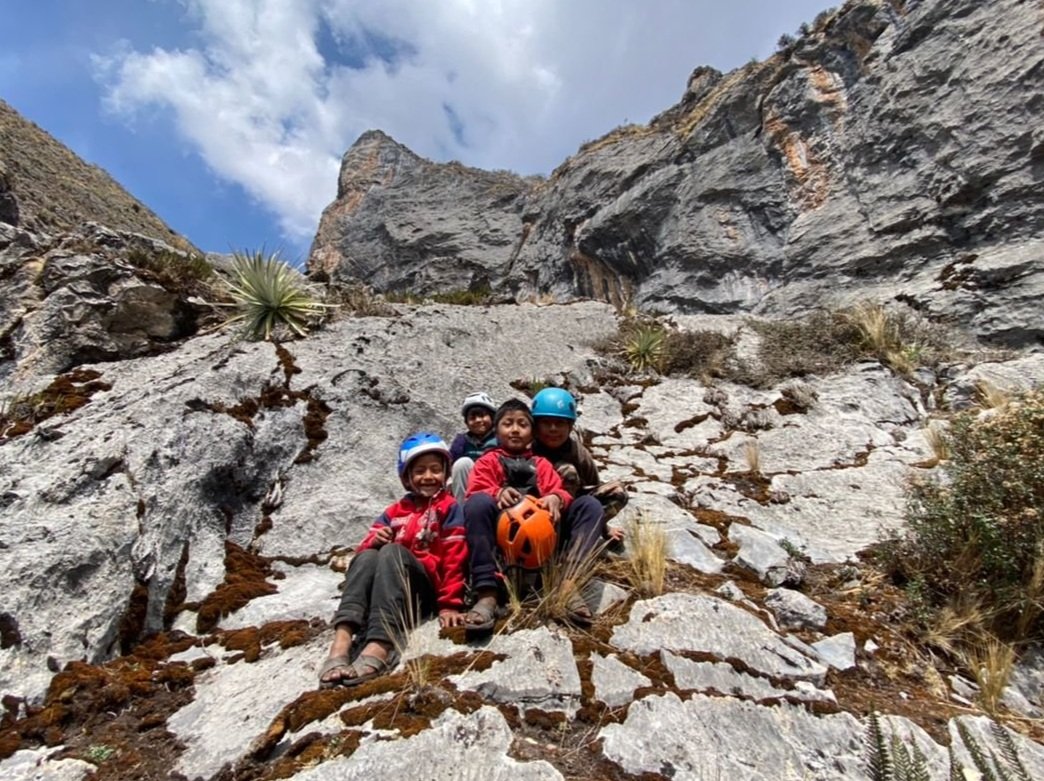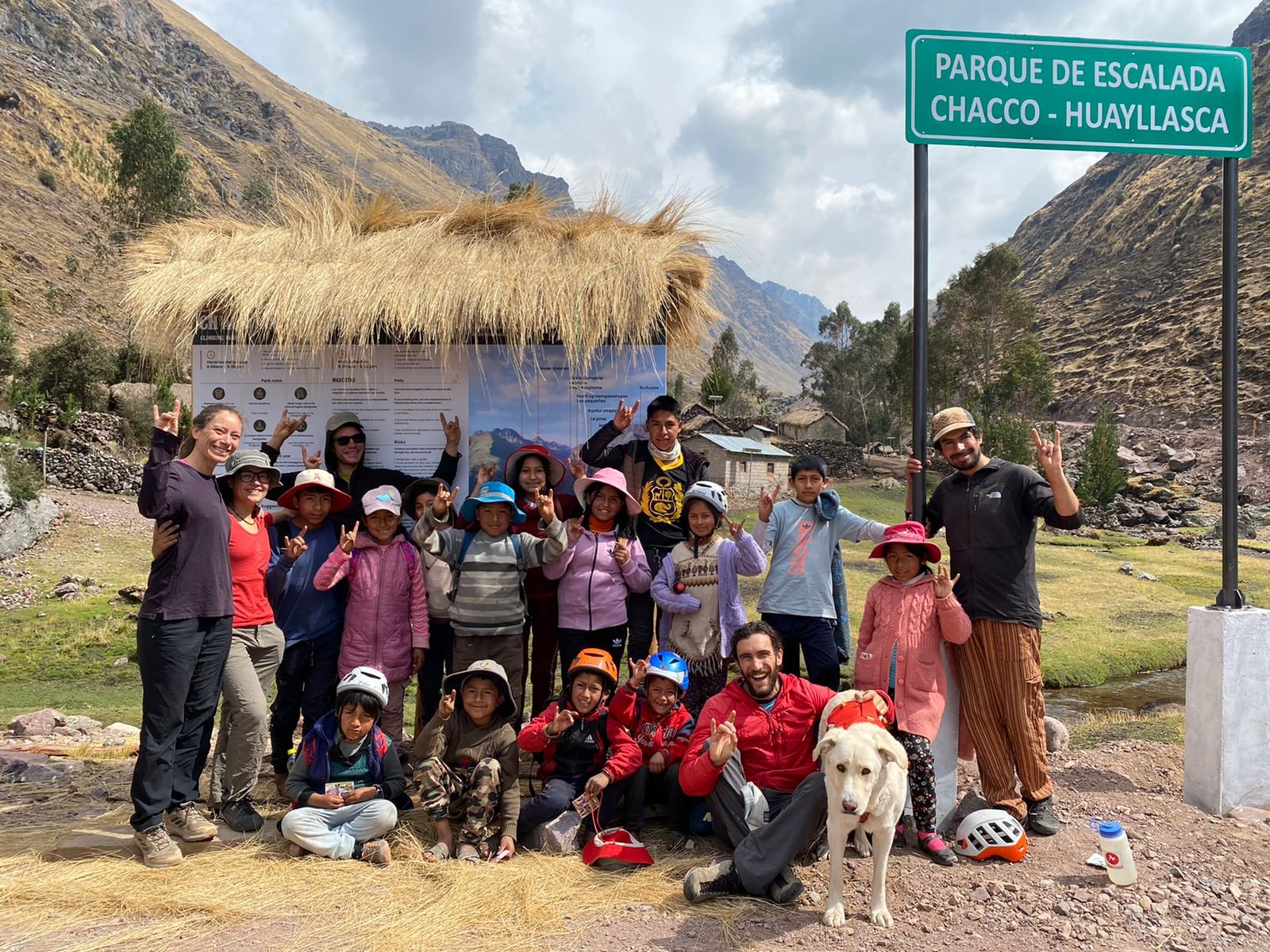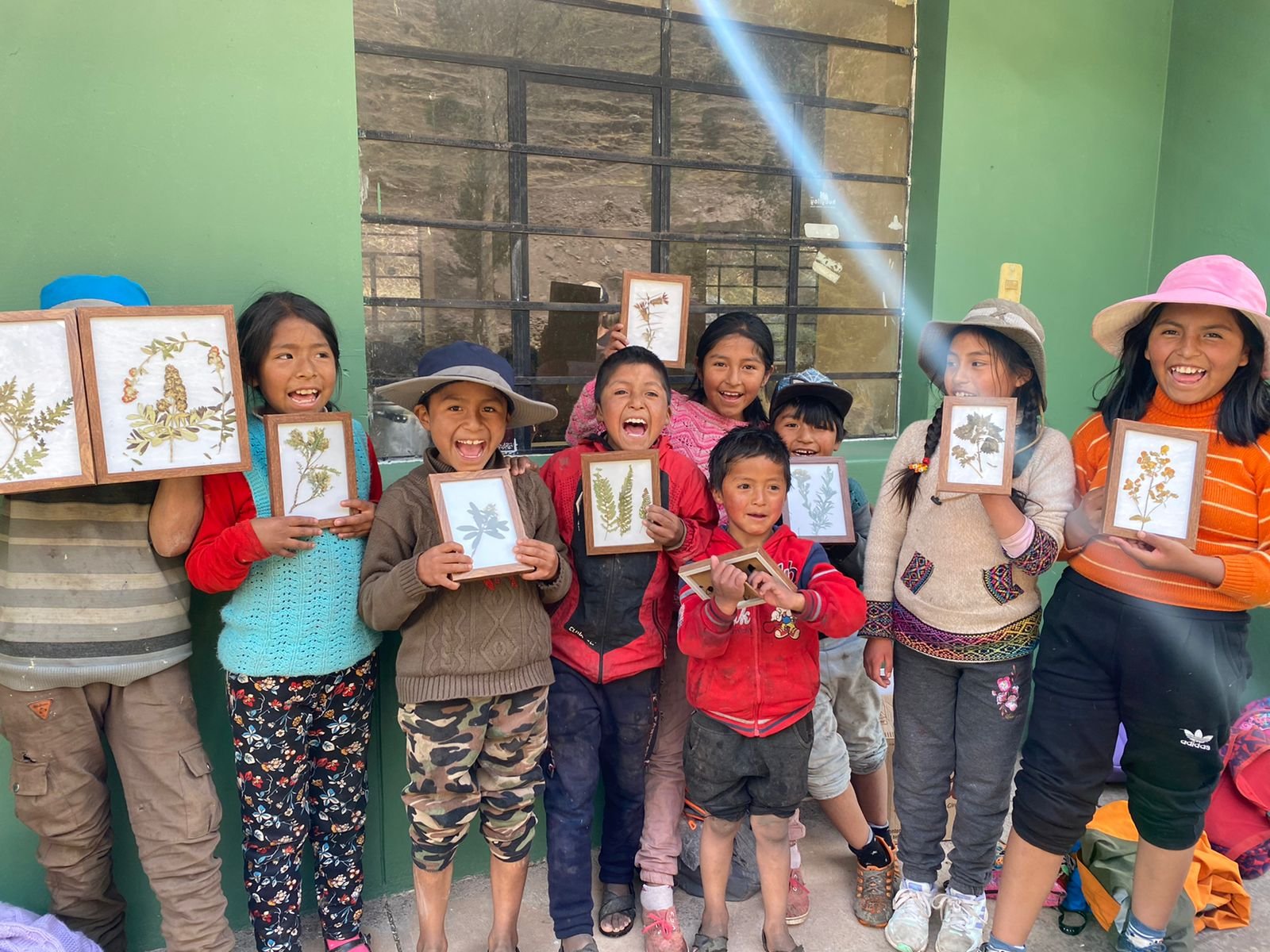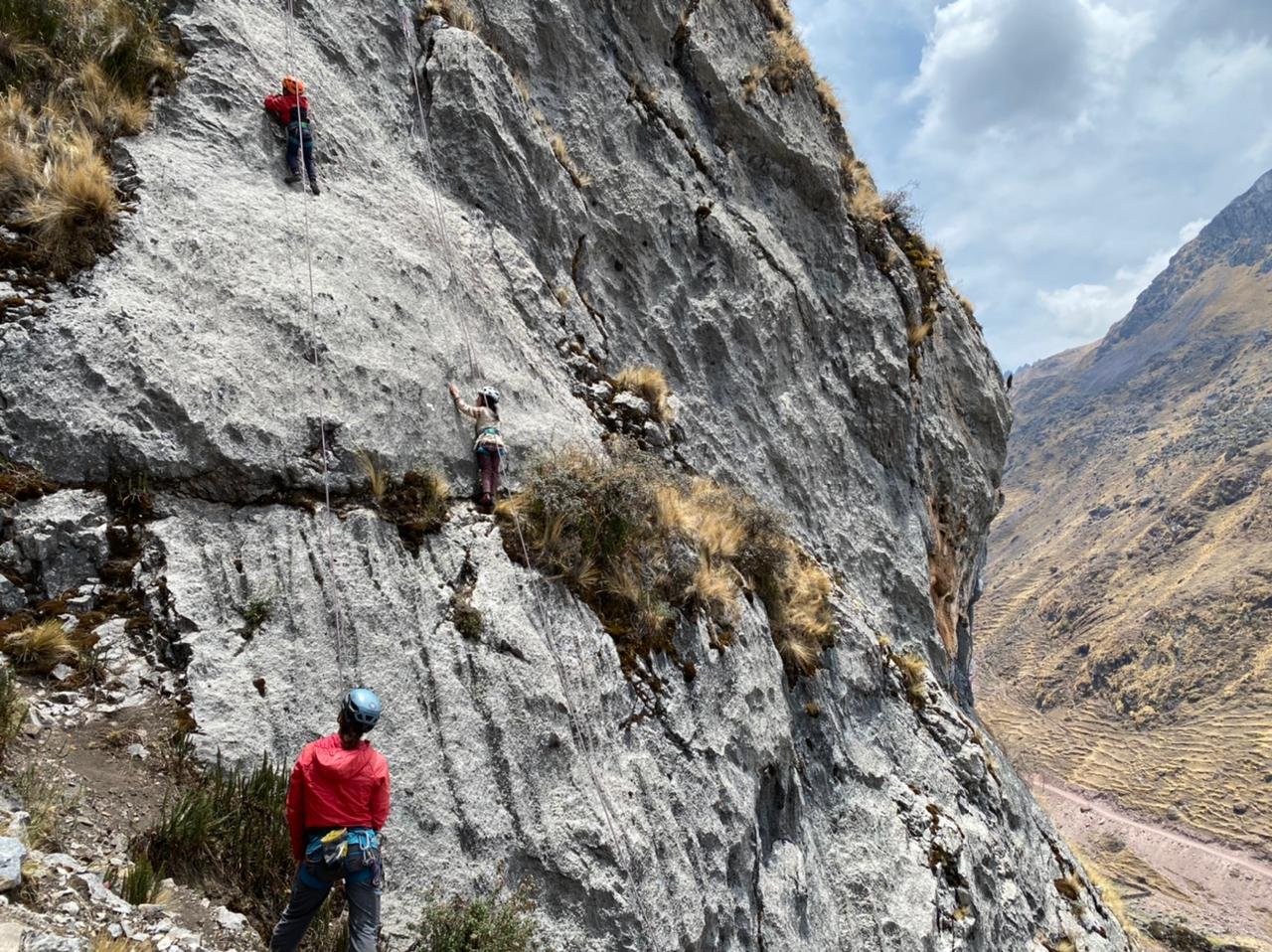Balancing the Scales: Bringing Outdoor Opportunities to Peruvian Youth
Two Peru-based nonprofits work to create equal opportunity through climbing and outdoor recreation for local youth in the mountain community of Pitumarca
By Robert Kyte | November 21, 2022
Photos by Mara Brcic Bello
Pitumarca is a small district nested in the Peruvian Andes, home to a vibrant community of largely Indigenous people of Quechua descent. It is also home to some spectacular rock climbing, though this largely remains an activity for tourists. Together, Peruvian outdoor nonprofits Uma Rumi and 7a Escalada are creating a youth program to bridge the social and economic gaps between visitors to the land and the local community, helping young locals access outdoor educational and recreational opportunities in their home mountains.
The year-long program will provide at least one outing per month for groups of 20+ local youth ages 4-17 at zero cost, supporting them to form positive relationships with the land through climbing, camping, excursions, and art. Through a gradual and inclusive introduction, the organizations hope that outdoor recreation will be a catalyst for greater socioeconomic balance in the region, and that a renewed love of the land, as well as a desire to protect it, will span generations.
These organizations need the support of the global climbing community to make this program a reality. Read on to discover how you can support the program from Mara Brcic Bello, co-founder of Uma Rumi.
GCI: What is Uma Rumi?
Mara Brcic Bello: Uma Rumi is a Peruvian organization that uses outdoor recreation as a tool for long-term conservation of natural areas. We (the founders) realized that there was a lack of organization in the natural areas where we practiced rock climbing. We felt there were more possibilities of development beyond bolting, and wanted to add to the rock climbing community with our background in conservation and agroforestry.
Today, Uma Rumi has joined forces with 7a Escalada, our “sister NGO”, working together in the organized holistic development of two climbing parks in Pitumarca. Our strategies to reach the long term conservation of the parks have three pillars:
1. Create opportunities for the young community through outdoor recreation outings.
2. Perform scientific studies and facilitate risk mitigation strategies. We are currently seeking funding to further research traditional knowledge shared by the local community on the presence of two endangered animals that live around the crag (the Andean cat and the taruca).
3. Create a long term bond and relationship with the older community through interviews with adults by accompanying them in their day to day, whether that be going with the herd or carving potatoes. Through this, we look to create a space to share their vision of the land the future.
We also work on giving the community the tools to create a safer space for them to share their land, such as through legal advice regarding possible injuries of climbers and providing free first aid courses.
What is your connection to Pitumarca?
We first saw the amazing walls of Ch´aqo Wayllasqa in 2015. Currently, part of the Uma Rumi team lives in Pitumarca year-round. The other part of the team lives a few hours away, but travels to Pitumarca every month.
When and how was this idea developed? Who was involved?
The idea of developing a climbing park in Pitumarca started the moment we saw the walls in 2015. First, we needed to talk with the community to ask permission. However, after the first few years we realized that putting up routes on the walls wasn’t enough. In order for climbing to have a sustainable future, we needed to work to involve the local community. We believed not only that climbing climbing should benefit the local community, but they should enjoy it as well. From this idea, 7a Escalada came to life. However, this process would have been extremely difficult for 7a Escalada to do alone. Uma Rumi, another local nonprofit organization and now vital partner to the project, has been key to making sure this development is as comprehensive and holistic as possible.
What are some of the challenges you’ve faced as a nonprofit organization in Peru, and in working to develop this program?
Creating a formal nonprofit organization in Peru is a very costly and bureaucratic process. It's a bit ironic that in Peru, when trying to do something that will benefit the Peruvian population, the government imposes many roadblocks. This is one of the reasons we are two partner organizations working in Pitumarca – so that we can share in the workload. Furthermore, we have had to deal with the common yet mistaken idea that conservation is a work of passion and therefore should be free. An extra challenge in this process has been finding people that are committed to the long-term. Even though the work might not be compensated fairly, it is something that will benefit the whole community of Pitumarca in the long run. It is also for this reason that, when we do receive monetary help, we are very transparent with how we use the funds.
What are the direct benefits of this program to the youth and their families?
The program benefits the families in the community in several ways. Families benefit monetarily when visitors come to the climbing park because visitors must pay for climbing, camping, food, and transportation. Aside from the climbing park, families benefit from the work of 7a Escalada and Uma Rumi because their children have access to free recreation and outdoor education. We hope that by including the children more directly in the work of conserving the park, such as monitoring the animals and ecology of the park, perhaps they can think of working in the park as a future career. The park will need park rangers and administrators, which will ideally come from the local community.
How do you see rock climbing (etc.) as a way to connect to the land? What does a connection to the land look like to you, and to the community?
Climbing and outdoor sports have made the local community rediscover an appreciation and love for their land and territory. Unfortunately, children from high mountain communities are often stigmatized, and therefore are ashamed to say where they are from. However, with the addition of a climbing park, this land is a space where many people want to visit. Not only does this invoke a sense of pride in the youth and families of the community, but they too are able to enjoy themselves and interact with their land in new and non-traditional ways. A connection to the land involves an appreciation for all that the land can provide. Previously children may have seen the land as providing food, but not much else. Now they are learning to connect in new ways. We teach each other about the different types of plants and animals which are unique to high altitudes (they might teach us more than we teach them). And, of course, climbing and sports help them view their land as a source of fun, and an area which should be protected and preserved.
Climbing the walls of Ch´aqo Wayllasqa outside Pitumarca. Photo: Mara Brcic Bello
What are some of the ways the community are already connected to the land? How do they envision the future of this program, and this connection?
The community that lives in the climbing park traditionally work as farmers. They plant potatoes to eat and raise alpacas for the sale of wool. The older generation remain in the high mountains because they don’t have many ways to generate an income, while the younger generations leave for more education, or simply because they don’t enjoy the lifestyle custom of those living at the high altitudes. It is our belief that the creation of a climbing park, which generates an economic alternative, can help change how the youth view their land.
How does the relationship currently exist between the local community and visitors?
Currently, the part of the community that interacts most directly with the visitors to the park are the adults that live up top in the climbing park. However, increasingly the youth are also starting to interact and have relationships with visitors. This has been enormously enriching for both parties. By interacting with visitors, and sharing knowledge and visions of the space, the youth are beginning to understand the humanity of those who come visit the park, instead of viewing visitors solely as privileged and foreign.
What are some ways beyond donating to this program that others can help?
While donations are what keep the program running, there are many alternative ways to help. The program always seeks to have volunteers. If visitors desire, they can work with the youth by delivering workshops on things like art, climbing, and ecology. Workshops are a great way to share a space. We all have something we can share. By interacting with the youth and local community, everyone has the opportunity to enjoy what others can teach.





